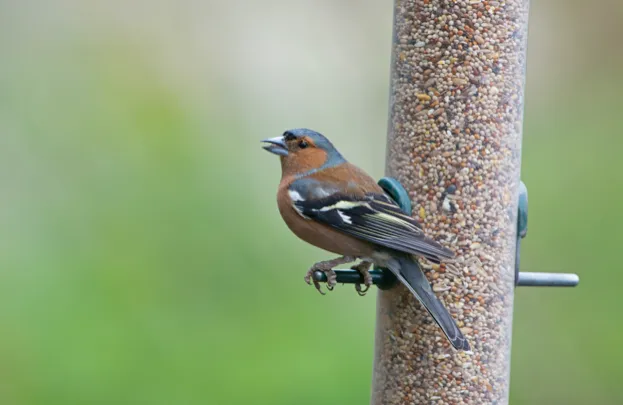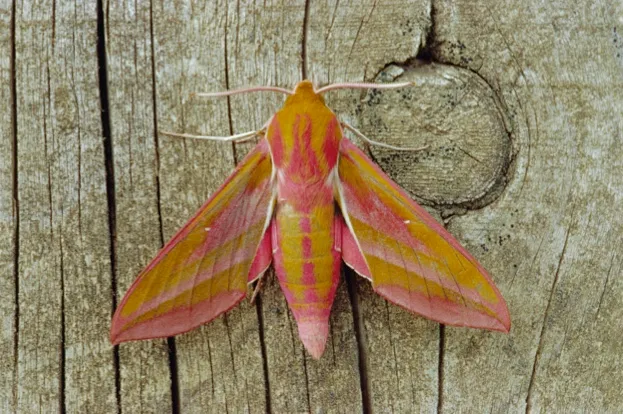Why should you monitor your garden?
Understanding the seasonal patterns of change, variations between years and the changing status of different species will all help you to manage your garden better.
In addition, contributing to national monitoring schemes will enable you to learn a lot more about the wildlife in your area, since you can compare your data with national patterns. It will give you targets to improve your garden for those species where you are below average, and ensure you get that nice superior feeling when you have rare species or counts above the national average.
By monitoring the activity in your garden, you will also be able to find out how good a wildlife gardener you are, and it will teach you a great deal about British wildlife. So, plan some recording activities that you can fit in around your busy life.
How to monitor your garden
Keep a diary of the events in your garden
For example, when does frogspawn appear in your pond? When do winter redwings arrive? When do different trees flower? When do the first spring migrants, such as swallows or house martins, appear?
Contribute to monitoring schemes
It is easy to contribute to national monitoring schemes, especially now you can enter the data online, which avoids the hassle of completing forms and posting them back. It also means that your data can be analysed quickly and that you get feedback promptly. Many organisations run training programmes and national days on which you can attend events to learn more about the wildlife in your garden.
There are two garden bird-monitoring schemes. The RSPB’s Big Garden Birdwatch has been running since 1979; all you have to do is record the number of birds you see in your garden for any hour during a specified winter weekend.
The BTO’s Garden Birdwatch involves monitoring the number of birds in your garden throughout the year. Both supply fascinating information on the changing numbers of garden species.

Chaffinch on bird feeder © David Tipling / Getty
Mammals are harder to monitor, but you can contribute records to schemes run by the BTO (through Garden BirdWatch) and the People’s Trust for Endangered Species’ Living with Mammals survey.
Moths are one of the more diverse groups of garden wildlife, but they are often overlooked. Moth trapping is best done on a warm, cloudy, still night, but remember that moths are active throughout the year, so you need to trap regularly to identify the full range of species in your garden. You can also participate in National Moth Night run by Butterfly Conservation, Atropos and the Centre for Ecology and Hydrology.

Elephant hawk-moths are one of many moth species that can be found in gardens © Nature Picture Library / Getty
What wildlife should you look out for in your garden at night?
Moths
You need a good field guide and plenty of practice to identify moths, but it’s worth the effort. Trapping throughout the year will reveal the diversity of species in your garden.
Keep a diary of their changing behaviour, such as which fox is dominant at different times of the year, when the dog fox feeds the vixen and when he stops, and any injuries incurred in fights.
Newts
Count the number of newts in your pond each breeding season. They eat frog tadpoles, so monitoring will enable you to see what impact (if any) they have on frog numbers.
Badgers
If you feed badgers, sketch the size and shape of their face stripes and ear tufts, and tail shape; these will enable you to recognise individuals and monitor their comings and goings in your garden.
What wildlife should you look out for in your garden during the day?
Many bee species are declining, so learning to identify and monitor bees is particularly useful. It will also show you which plants different species prefer and where they nest.
Spiders
Many different species of spider occur in gardens. Searching through dense vegetation and under logs and stones will produce a remarkably long species list.
Swifts
Monitor when you see swifts. Early arrivals can be easy to miss if they’re still heading north. Summer screaming parties are harder to miss; a sudden silence is a sign of their departure.
Chiffchaffs
Often heard but rarely seen, chiffchaffs are surprisingly common in gardens with mature trees. Weekly monitoring provides data on the importance of gardens for different species.
Painted lady butterflies
Some years, painted lady butterflies migrate to Britain from Africa in great numbers; in others, they are rarely seen. Record your sightings and submit them to Butterfly Conservation.
Woodmouse
This is the commonest mammal in gardens and an important food source for urban tawny owls. Trap in spring or autumn to see how many are using your patch.
Frog spawn
The date frogs start laying their spawn is variable, and a cold snap can delay this by some weeks. Record both when the spawn is laid and when the froglets emerge from the pond.
Orange tip caterpillar
Carefully search the seed pods of jack-by-the-hedge and lady’s smock to find them; there is usually only one per plant.
Top tips for monitoring your garden
Newt counting is best done on a still, warmish night with a torch. Count the number of newts seen in a set time (20 minutes), then repeat the count two or three times a year before the pond vegetation gets too dense.
In spring, watch where birds are building nests or which nestboxes they’re using and map their approximate positions without disturbing them. Look for the nests in autumn to see exactly where they were. Be thorough – it’s amazing how many you can miss, especially those of species such as dunnocks.
Read more
Start compiling lists of the species of insects in your garden. This may sound a little daunting, but begin with some of the easier groups, such as beetles, bees, dragonflies and damselflies. Once you have mastered them, try some of the more complex ones. Click here to find out 10 ways to get into butterflies.
Use Longworth or other small mammal live traps to catch woodmice, other rodents or shrews in your garden. These can be marked by clipping a bit of fur on the rump with scissors to see how many different mice are using your garden: there may be more than 20 in a typical suburban setting. If you think that you may catch a shrew in your garden, you will need to take precautions or obtain license.
See where different species prefer to lay their eggs (food plants, deep shade or sunlit patches, etc) and use this information to help plan your garden to provide more egg-laying sites. Also record which species you see each week to give you an idea of how they change throughout the year and from year to year.
